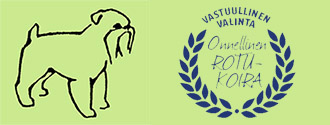FAQ
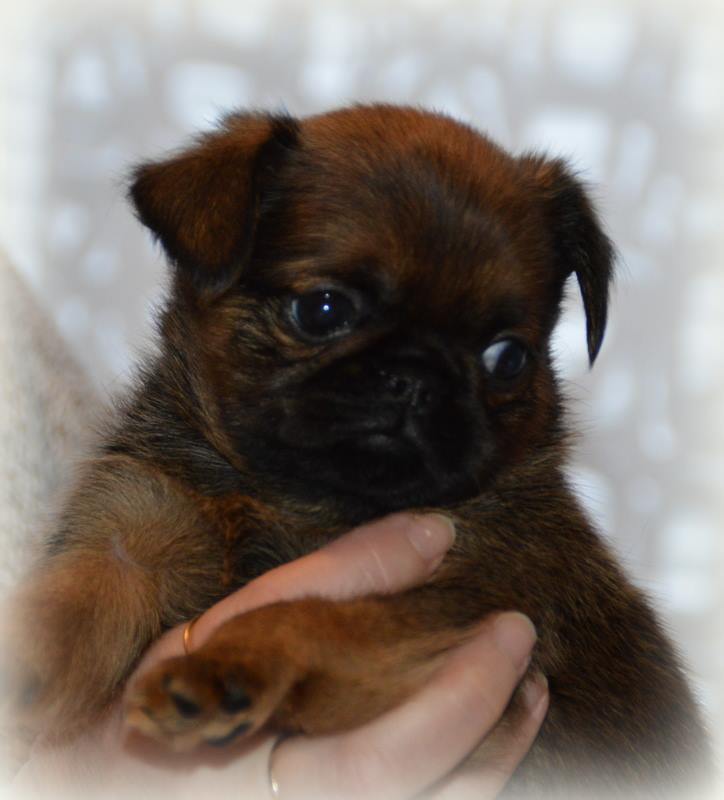
The main difference of course is the looks and the coat care. The coat quality and the texture tell you these two varieties clearly apart from each other. Another clearly visible difference is the facial features; the beard belongs to the rough-coated Griffon and the slick Mickey Mouse-face to the smooth coated version. When it comes to the care of the coat, the rough coated Griffon needs stripping twice a year or so and does not shed, while the smooth sibling may shed in spring and autumn even a bit more than normally, but saves you from the bother of the grooming. The rough coat of good quality does not get easily tangled or dematted or does not need any extra washings. In turn the smooth coat may be somewhat grateful for the proper wash and polishing every now and then. It is often mentioned that the smooths may be even a bit more lively than their rough siblings and in turn the rough-coated may be slightly more reserved. Then again, you must remember that there’s an exception to every rule and they are all individuals! Underneath you will find mainly the same little heartbreaker up to the point where these breed varieties – Griffon Bruxellois and Petit Brabancon – are regularly cross-bred and the both coat types can exist in the very same litter. In fact you can tell the breeds apart just in the age of 3-4 weeks! The exception to this rule is the smooth-to-smooth mating which always produces a 100% smooth litter. The reasons why these varieties are constantly bred side by side are the cherishing of a proper gene pool and the pure red colour of the rough-coated Griffon.
It’s pretty much the matter of taste, but for helping to make up your mind I think it is useful to have a brief comparison. One of the most obvious differences between the two sexes is the heats. The Griffon bitch is in season twice a year in average. She is usually very clean and neat pet and takes good care of her private parts, but the discharge at the time of the heats is one of those reasons many people are reluctant to bring a bitch to their household. In turn I always want to remind my puppy purchasers that roughly speaking the opposite sex is in season all the time! An unneutered male Griffon can be eager for territory marking, unfortunately sometimes also inside the house. Griffons are very attached to their owners and usually do not run away even at the time of their heats. So, from that point of view you could consider either sex. Secondly you may find differences in the temperaments between the two genders. We often find the bitches less lively than the dogs and sometimes it is said that the bitch is slightly more ”faithful” and willing to please. However, on the other hand we should remember than an unneutered bitch travels all the time on the rollercoaster of her hormones and may therefore have varying moods depending on the state of her cycle. Male Griffons can be a hair more active and usually hold their playful attitude till the very end. In some breeds you have to give a thought to possible dominance problems, while weighing up the difference between the genders. In my honest opinion though I’d say that the Griffon is a nice pet and easy to train for the house rules, whether it is a dog or a bitch.
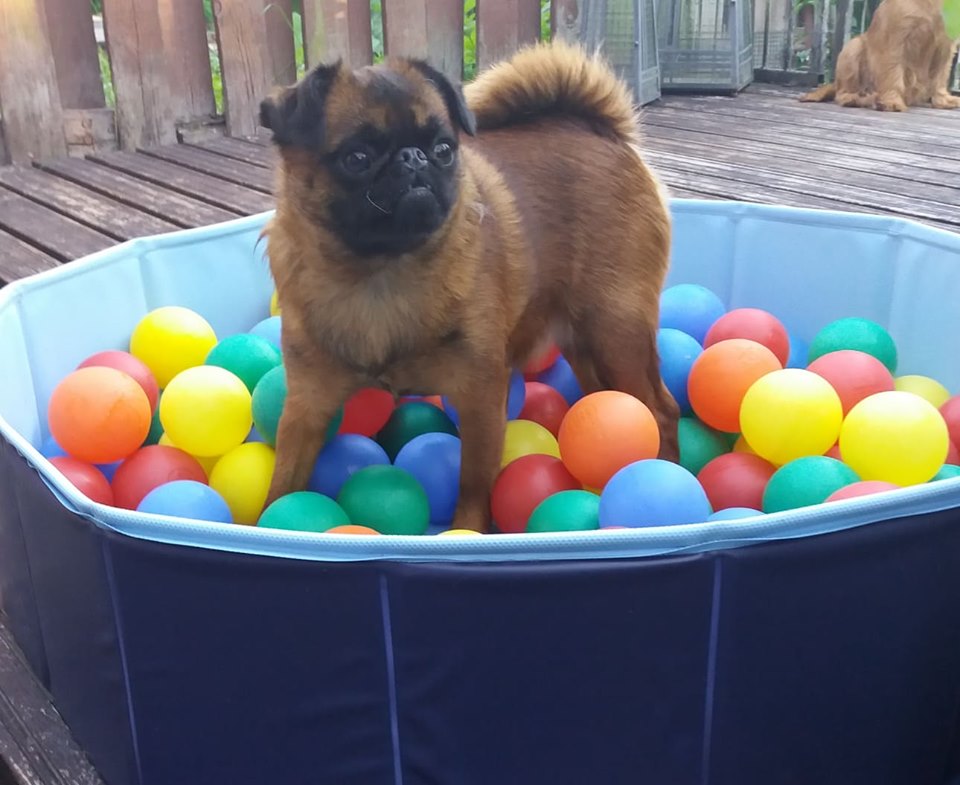
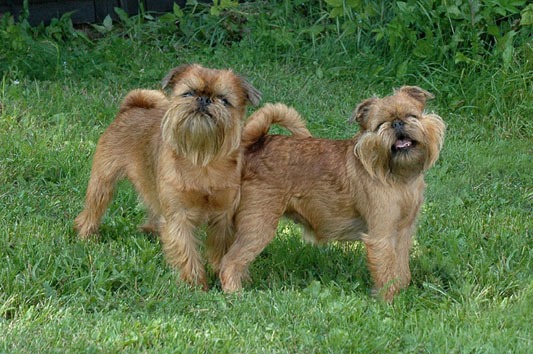
A general ”myth” is that the giant breeds and the toy breeds in the other end achieve remarkably shorter lifespan than the average dog. Or on the other hand, the more eccentric looks, the less years to live. It may well be true with certain breeds, but I would not undersign that when it comes to the Griffon. In normal circumstances Griffons do well achieve a proper lifespan of some 13-15 years. In their older years they may sleep more, may have weakened sight or hearing or have a heart murmur. All typical signs of elderly years in the majority of breeds.
As for his size the Griffon can be a perfect pet not only in houses, but also in city apartments. He needs his daily walks naturally, but his demand of exercise or space is not excessive. But yes, unfortunately Griffons can be barkers especially, if you own more than just one Griffon. Of course a lot depends on the patience and the persistence of the owner. In right hands, with a talented owner Griffon can be a marvellous pet also in the downtown surroundings.
We have used to consider the Griffon as a solid and healthy pet. We commonly tend to mention those few hereditary diseases which are PRA and HC, luxating patellas and the Legg Perthes disease. In this country the eyes and knees of our breeding animals are routinely checked and we believe these issues are relatively well under control. A ”new” problem in the breed that has been recognized just a few years back, but probably existing in the breed for ages, is the Chiari malformation (CM) and/or syringomyelia (SM). The experts are working hard for finding out, what we can do about this through the genetics and/or improving the skulls. With the little knowledge regarding this issue yet and for the high expenses of the MRI’ing this most worrying disease is not yet under the regular control with the most us breeders. However, without a doubt this is the state which will demand the most of our attention and dedication now and in the future. As breeders and breed enthusiasticts we should also pay more attention to so called holistic health of our studs and broods in daily basis and strongly grab also to such problems that are not at all controlled by the breed clubs or the kennel clubs. Even more important than a patella luxation free certificate or such is to take a realistic and honest look at your dog’s health record, sum up the visits at your veterinary clinic and analyze the reasons behind them. In my honest opinion with the good care and the correct feeding we have available today that amount should not be very many. If the health of the Griffon fails the most common reasons seem to be different kind of allergies, kidney stones (usually calcium oxalate) or the Cushing’s disease.

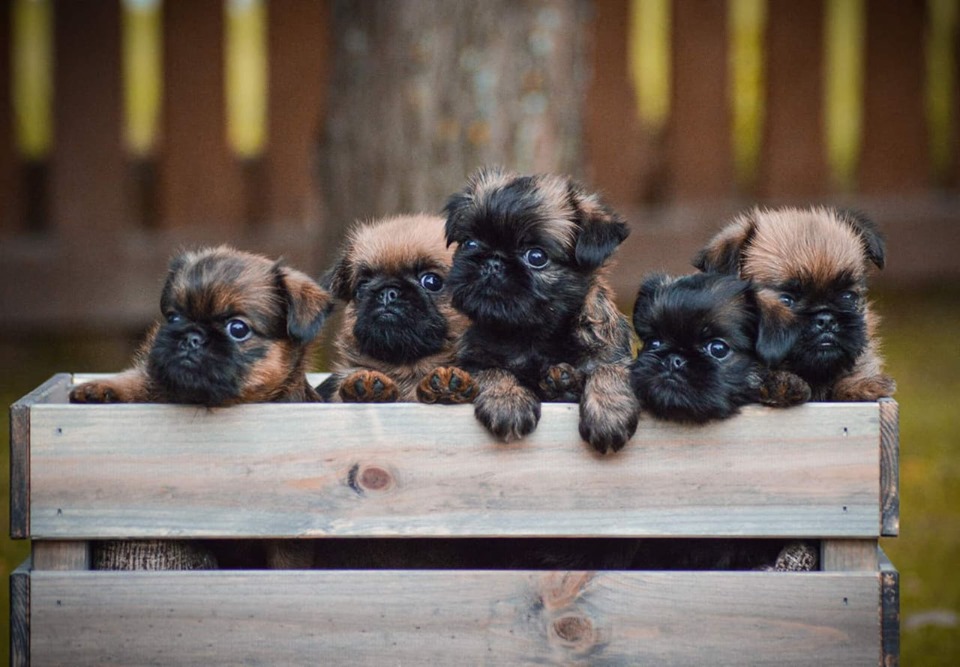
The ability to normal whelpings seems more or less to run in the family. Some lines struggle with difficult whelpings and caesarian sections again and again, while in the other end there are lines, which give easy births the generation after another. There’s often mentioned in the the dog literature that the Griffon whelpings are hard due to the big head size of the newborns. In my opinion this cannot be entirely undersigned, since in my experience a brand new, wet puppy is quite even at both ends with his mouselike little head. And indeed the head begins to get its correct form and a more Griffon-like look just at the age of 2 weeks or so! Rather I would say that the possible problems are caused by the typical reasons that can exist in any breed. One of them is the weak labour that can be the consequence of a dead puppy or a small litter of just one pup. Sometimes of course the bitch herself is the guilty one with some structural weaknesses like a narrow pelvis or an ultrashort body, which does not allow proper room and strength for a good push. For the latter or for keeping up the normal litter sizes we should accept a slightly longer body on a Griffon bitch. Generally speaking it is useful to give a hard thought and find out the reasons if and when you bump into difficult whelpings and C-sections more or less frequently. Naturally the lines with normal, easy whelpings should be favoured.
First of all we have to take another look at the Griffon face. Yes, the muzzle is short, but in fact it is not flat, but just very strongly turned up. Comparing with several other brachycephalic breeds you can actually eye-witness a clear muzzle in the Griffon. Nevertheless, the short muzzle itself does not cause breathing problems. If and when you meet such problems on your dog, in the majority of the cases you can locate some other reason in the background like weak general condition, obesity, heart problems or the hot weather. As for structural weaknesses the troublemakers can be too small nostrils (do remember that the Griffon standard has always required large, open nostrils!) or the long soft palate. Reverse sneezing or snorts are quite common in any breed, but with an untrained eye it is often interpreted as a breathing problem and may get the owner startled. However, this is an entirely harmless spasm, which is caused by the irritation of the soft palate. The spasm is triggered by dust, pollen or some house chemicals. Sometimes it can appear while eating, drinking, playing or pulling in the lead. If the snorts exist repeatedly or in regular terms, a veterinary check may be needed, as sometimes the snorts can be caused by nasal mites, a tumour or a viral infection. Normally this spasm though is harmless and easily helped, when you just shut the dog’s nostrils for a moment with your fingers.
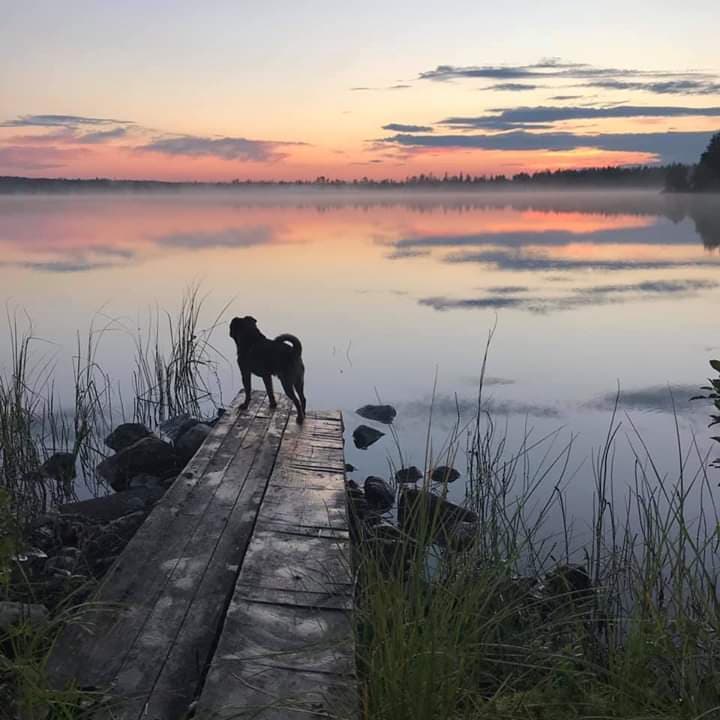
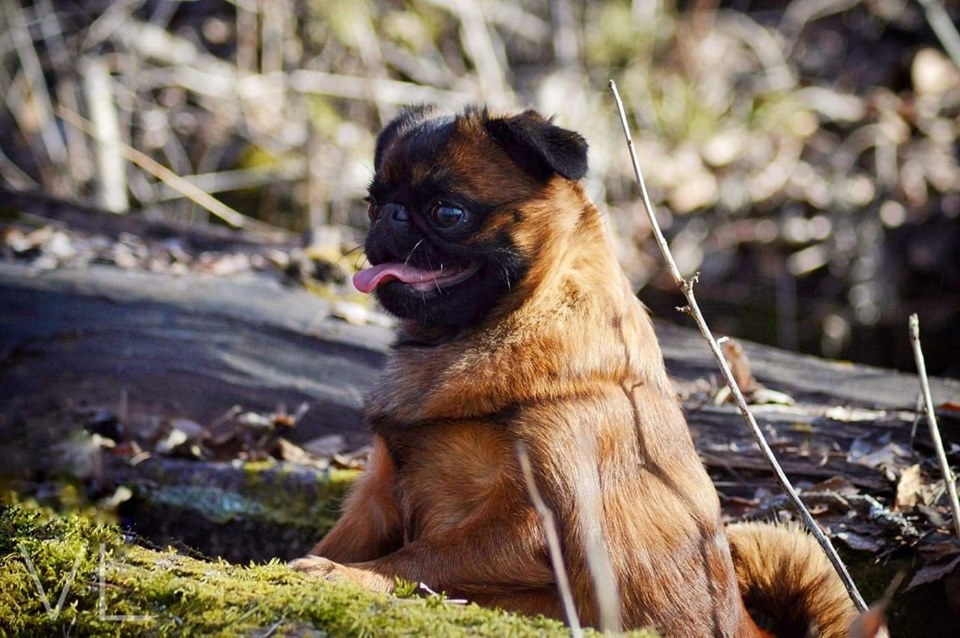
I would say the Griffon grooming is not at all difficult, but yes, it may demand some patience. You do the stripping by using a special stripping knife or just your fingers and while you’ve once seen the technique, it is quite easy to adapt. For the shows you should have the sectional stripping on your Griffon to make him look at his best. For achieving the best possible result for the show day you must make a plan well ahead as for your show-calendar and be persistent with your grooming schedule. The breeder of your Griffon will give you the best advice and tips for the show trimming and in time – I’m sure – any one of us is able to learn how to do it. In the beginning you may need more time for your stripping sessions until your eye and hand are trained to work together for achieving the routine. A pet Griffon does not need the sectional stripping but can be stripped all the way through at the same time. As for an older pet Griffon or a retired Griffon you may ease up things even more by clippering the coat with the electric clippers.
Is Griffon a good companion for walks? What other hobbies are suitable for a Griffon?
A young, healthy animal simply loves to go for walks, but Griffon is not the best possible companion for jogging or marathon-length of walks. If you like to jog, run or ride by bike, some other breed will fill your expectations better than a Griffon. Griffon-pups and elderly Griffs are quite happy with free runs and plays in the garden or in the woods. An adult Griffon with the normal health and condition may in turn enjoy little walks of few kilometers daily meeting doggy friends and sniffing all the interesting smells on his way. Every Griffon is an individual with individual needs and preferences, but generally speaking I would say Griffon can be a lovely companion on agility and obedience fields.
Could you recommend this breed to a person, who suffers from dog allergies?
The simple answer is ”no”. A common belief is that a dog, that doesn’t shed, does not cause any allergic symptoms. But you must remember that it isn’t the dog hair that causes the hypersensitive reactions, but the dandruff on the dog’s skin i.e. from that point of view I would not recommend any breed to an allergic person. Sorry!
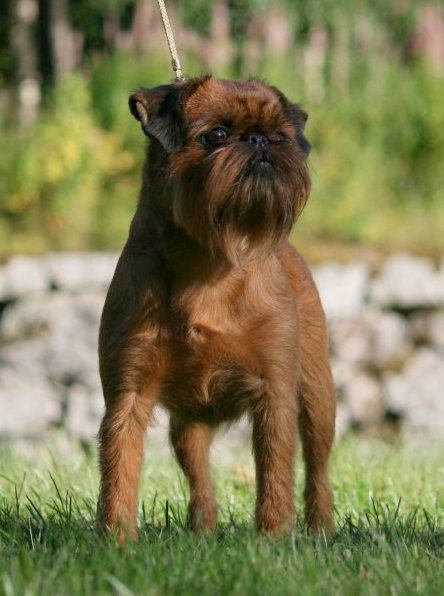
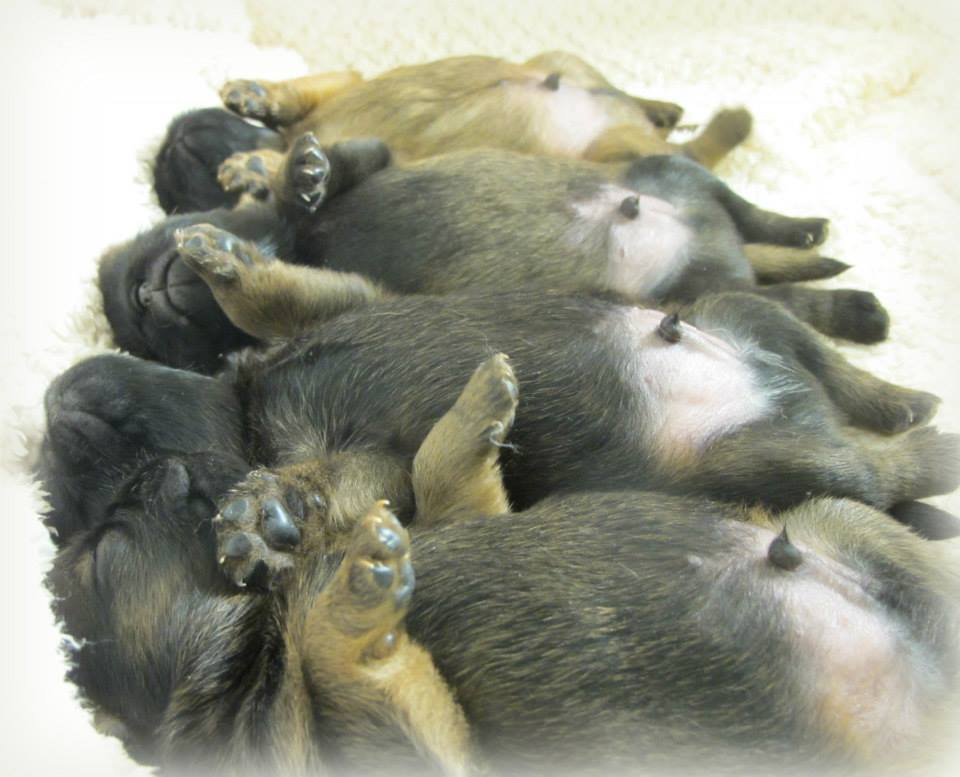
Griffons do enjoy the company of a soul mate! Or to be exact, they nearly demand it! The best couple naturally is a bitch and a dog, but the practical reasons may speak against this choice. In my own personal experience two dogs is a better combination than two bitches. Griffons are not eager to fight and you bump into conflicts very seldom, but if and when they start fighting the dogs are more fair in their acts. Then the picking order is once settled, the past is the past and they do bury the hatchet. In turn the bitches may be rather unfair towards each other and maintain the inflamed relations till the very end. The picking order comes more naturally, if there’s some age between these two friends.
In some cases, yes, but you must go for this after having a serious thought. You should weigh up your talents as a dog owner and give a closer look at the temperament and habits of your bigger dog. A big difference in size with these two family members is always a risk more or less, even if their friendship would prosper in many ways. Remember, that just a playful slap or a gentle bit may turn fatal to the small one, if you are just unlucky enough. So, yes, it is possible but does require a hard consideration, good planning and perhaps special arrangements in advance.
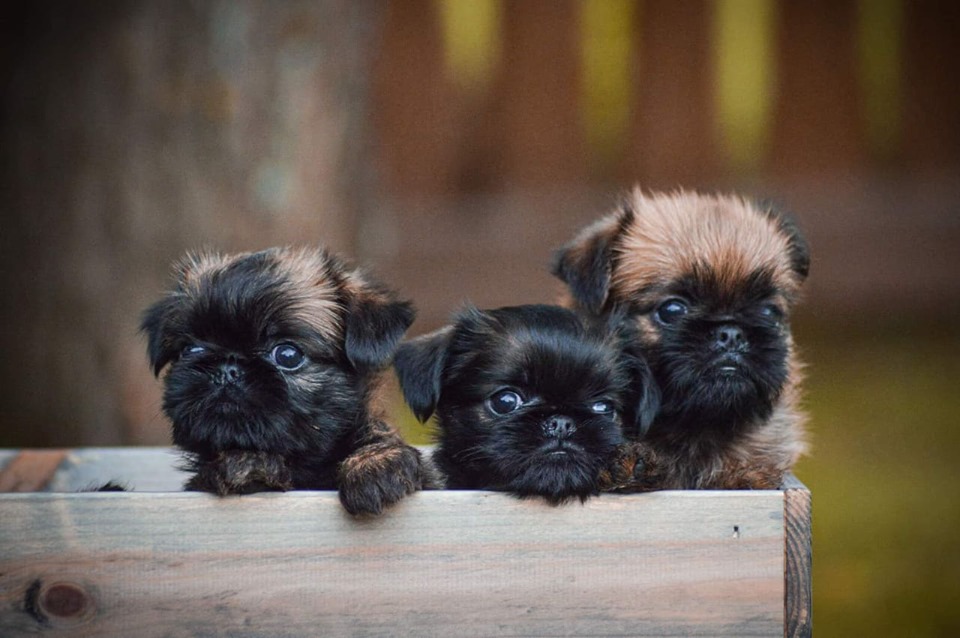
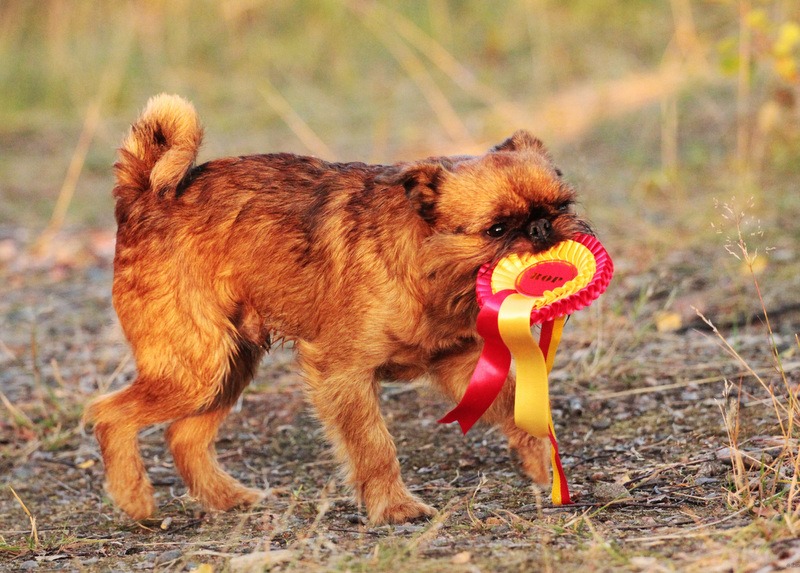
Griffon is absolutely filled with terrierlike elements, but no; it is not a Terrier. The majority of the terrier breeds were developed for hunting in caves and underground tunnels, while Griffon’s main purpose has always been to be an adored pet. Well, if you exclude his tasks in barns and stables, where he used to catch rats and mice in the early days of the breed’s existence. Slightly depending on a source you look at the history of the breed is somewhat differing. Most likely, however, Affenpinchers are the early ancestors of the breed. Later on that breed was crossed with the English Toyspaniel, Pug and Miniature Pincher. The Spaniel-cross gave the breed the rounded skull and the deep red colour. The Pug in turn brought big eyes and head, solid, cobby body and the good depth of the brisket. With the same bargain the breed delivered the black colour and the smooth coat and the different Griffon varieties had got the first kick for the start. In the FCI classification the Griffon is a member of the Toy-group i.e. FCI Group 9.
Yes, Monkeylike-puppies always go through the veterinary check before they are released to their new loving homes. They are wormed and hold a general vet’s certificate. However, I must stress that the veterinary report can only give you an impression of the pup’s current state and condition and it does not guarantee anything for the future or is not a health guarantee. The veterinary checks of their parents plus the good care of the nest create a good start for the pups. Good homework about the breed and the Griffon families can give even more predictability. Yet, a dog breeder is not someone ”next to the God” so to speak. Anything can happen, whether we want it or not. We do follow the instructions and recommendations the Finnish Kennel Club is giving regarding selling of the pups and we make written contracts of our transactions. In some amount, I hope, it gives some safety both to the breeder and the puppy purchaser, if and when some problems may arise.
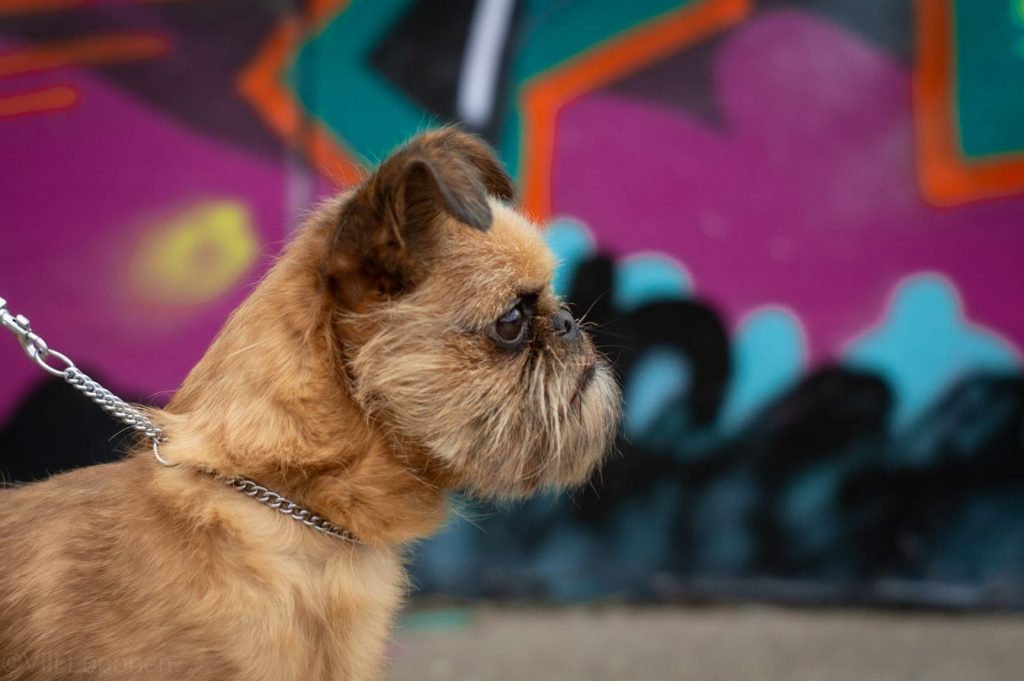
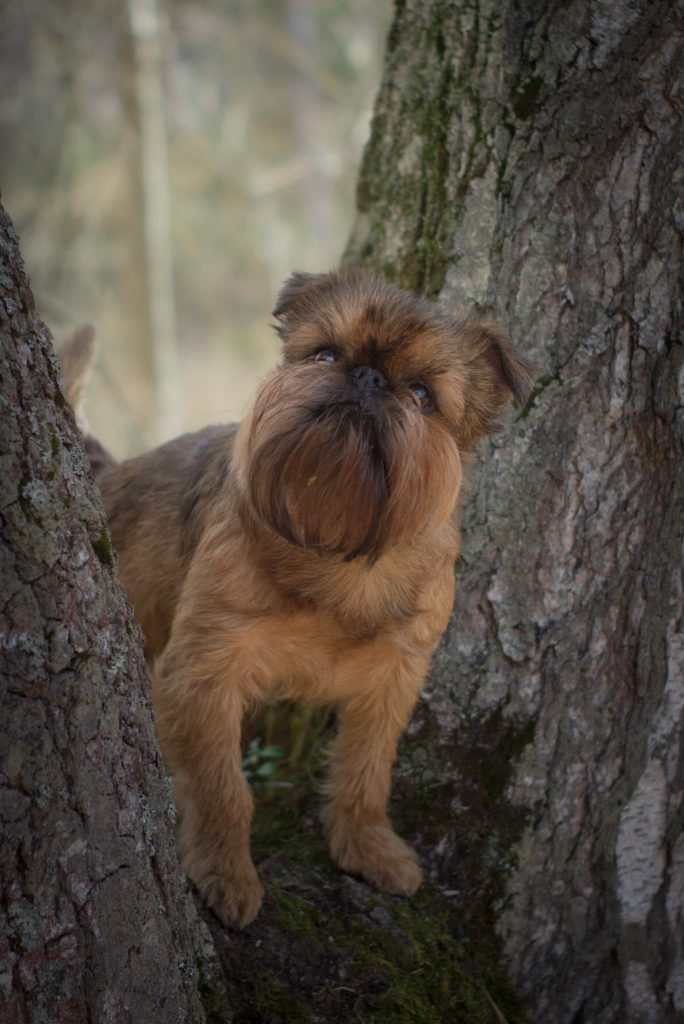
First of all I want to point out that you should never buy a pure-bred dog without the registration certificate in any breed, at any breeder’s, even if the price might be lower! Selling a pure-bred puppy without registration papers may tell you that the pup is a product of a puppymill or a result of some other irresponsible breeding manners or an illegal import and as a dog-lover you should never purposely support these kind of actions or phenomena. Wanting ”just a pet” you may end up to think the price that the breeders are asking for their puppies is quite excessive, but there you must remember that this price consists of hard work and responsibility starting from the veterinary costs, entry fees and other expenses the responsible breeders have to get used to even before they have a single puppy for sale! So, in some scale the price may also tell you, what kind of a breeder you’re dealing with and what to expect. Suspiciously low price should ring a bell and by choosing a low-cost puppy the purchaser is taking an obvious risk. Monkeylike-puppies are always registered by the Finnish Kennel Club and the microchipping is a must before sending in the papers. The average price of a Griffon puppy is 1500 euros.
